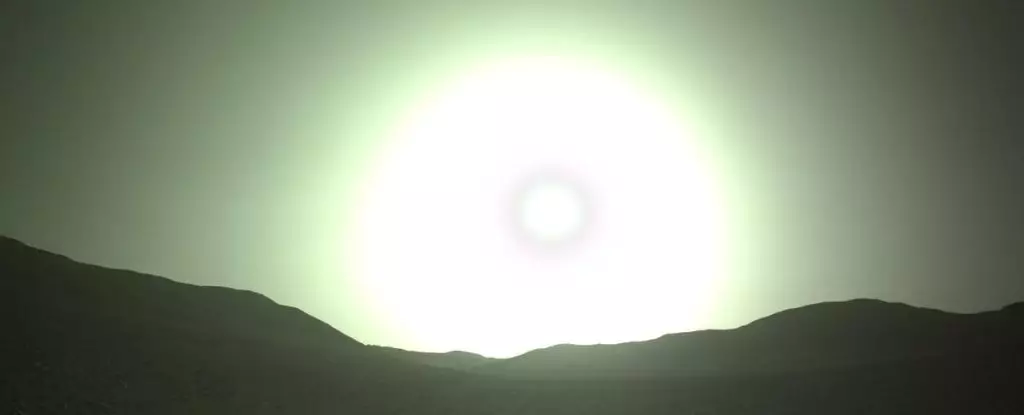On July 4, 2023, the Perseverance Rover commemorated its 842nd Martian day on the Red Planet. Amidst the fading light, the intrepid robot turned its navigation camera towards the distant, enigmatic horizon. In a single snapshot, it captured a marvelously otherworldly sunset, illuminating Mars’ sky with a mesmerizing cool blue hue that defied terrestrial norms. This captivating spectacle, like all Martian sunsets, is a testament to the dramatic atmospheric differences between Earth and the Red Planet.
Unlike the sunsets we experience here on Earth, the Martian sunset is a distinctive phenomenon, owing to several factors. Mars resides further away from the Sun compared to our planet, resulting in significantly reduced solar intensity. At maximum, it receives less than half the amount of sunlight that Earth does. Coupled with its meager atmosphere, consisting mainly of carbon dioxide with traces of nitrogen and oxygen, this dearth of light contributes to profound disparities in the way sunlight interacts with the atmosphere of each planet.
The vivid blue sky that graces Earth during the day is a consequence of sunlight interacting with oxygen, nitrogen, and other particles present in our atmosphere. This interaction scatters blue light across the sky, giving it its characteristic hue. However, during sunrise or sunset, when the Sun is near the horizon, its light must traverse a larger portion of our atmosphere, effectively filtering out shorter blue and violet wavelengths. Consequently, the remaining light that reaches our eyes consists mostly of warm oranges and reds.
On Mars, the absence of oxygen or nitrogen in the atmosphere results in a wholly divergent interaction with sunlight. Instead, sunlight encounters iron-rich dust suspended in the Martian atmosphere. This fine dust scatters lower-frequency red light, saturating the sky with a reddish hue during the day. However, as twilight descends, the red light is gradually filtered away, revealing a stunningly cool blue tone amidst the dust-laden haze. The dissimilarities between the two planets’ skies can be illustrated as follows:
The transitional period between day and night, known as twilight, on Mars offers a unique opportunity to capture breathtaking images of dust and clouds against a dark backdrop. These photographs provide valuable data for scientists studying the composition of Mars’ atmosphere and identifying patterns of dust and ice clouds. Notably, earlier this year, the Curiosity rover captured a remarkable image of the Sun’s rays piercing through the twilit clouds, offering unprecedented clarity. These images not only showcase the evolving characteristics of Martian clouds but also shed light on the dynamics of particle size changes over time.
For nearly two decades, the Curiosity rover, along with its rover peers Perseverance, Spirit, and Opportunity, has gifted humanity incredible snapshots of Martian sunsets. Each image never fails to captivate by its sheer magnificence. Despite receiving numerous images, the allure and grandeur of Martian sunsets persist undiminished.
The incomparable marvel that is the Martian sunset offers us a glimpse into the extraordinary atmosphere of Mars. The ethereal blues and mystical reds remind us of the vast differences between our neighboring planet and our own. Continuously fueled by the determination of rovers like Perseverance, our exploration of Mars promises to unveil even more wonders, leaving us in a perpetual state of awe.


Leave a Reply